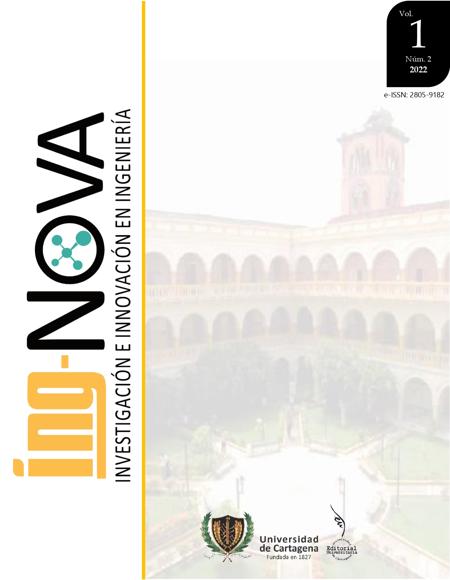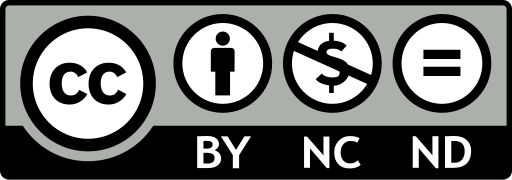Modelización integral del proceso de desinfección solar de agua: Descripción del viaje del fotón desde el sol hasta el patógeno y del sistema de reacciones mecanísticas de inactivación
Comprehensive modeling of the solar water disinfection process: Description of the photon journey from the sun to the pathogen and the mechanistic inactivation reaction system
Contenido principal del artículo
Resumen
La falta de agua potable en regiones de bajos recursos sigue siendo un desafío hoy en día. Existen tratamientos de agua alternativos que son aptos para ejecutarlos de forma doméstica. Sin embargo, estos procesos siguen teniendo limitaciones que, al fin y al cabo, repercuten en la eficacia del proceso. La desinfección solar de agua o proceso SODIS es uno de estos tratamientos de agua domésticos, cuyo procedimiento estandarizado peca por ser ineficaz en la inactivación de virus y protozoos (al utilizar botellas de PET que corta la transmisión de radiación UVB), tener alto riesgo de recontaminación (al tener que utilizar numerosas botellas de tan solo 2 L) y por ser ineficiente en la producción de agua potable (al recomendar como mínimo 6 horas de exposición solar cuando en muchos casos este tiempo está sobreestimado). El desarrollo de modelos cinéticos que consideren de forma íntegra y rigurosa la influencia de todas las variables que intervienen en el proceso es esencial para optimizar los tiempos de exposición solar y maximizar la producción de agua potable. Este trabajo propone una metodología para la modelización integral del proceso de desinfección de agua teniendo en cuenta el transporte de la radiación desde el sol hasta el patógeno (y su atenuación por la atmósfera, el material del recipiente y la composición del agua) y de las reacciones mecanísticas de inactivación de diferentes patógenos (virus, protozoos y bacterias). Además, esta modelización contempla la ejecución del proceso SODIS en recipientes de alta capacidad, así como el empleo de materiales más adecuados para la fabricación de los recipientes SODIS.
Palabras clave
Descargas
Datos de publicación
Perfil evaluadores/as N/D
Declaraciones de autoría
Indexado en
- Sociedad académica
- Universidad de Cartagena
- Editorial
- Universidad de Cartagena
Detalles del artículo
Referencias (VER)
United Nations (UN), Sustainable Development Goal 6. Synthesis Report on Water and Sanitation 2018, 2018.
K.G. McGuigan, R.M. Conroy, H.-J. Mosler, M. du Preez, E. Ubomba-Jaswa, P. Fernandez-Ibañez, Solar water disinfection (SODIS): A review from bench-top to roof-top, J. Hazard. Mater. 235 (2012) 29–46. https://doi.org/10.1016/j.jhazmat.2012.07.053. DOI: https://doi.org/10.1016/j.jhazmat.2012.07.053
Á. García-Gil, R.A. García-Muñoz, K.G. McGuigan, J. Marugán, Solar Water Disinfection to produce safe drinking water: A review of parameters, enhancements, and modelling approaches to make SODIS faster and safer, Molecules. 26 (2021) 3431. https://doi.org/10.3390/molecules26113431. DOI: https://doi.org/10.3390/molecules26113431
T. Clasen, L. Haller, D. Walker, J. Bartram, S. Cairncross, Cost-effectiveness of water quality interventions for preventing diarrhoeal disease in developing countries, J. Water Health. 5 (2007) 599–608. https://doi.org/10.2166/wh.2007.010. DOI: https://doi.org/10.2166/wh.2007.010
S. Luzi, M. Tobler, F. Suter, R. Meierhofer, SODIS manual: Guidance on solar water disinfection, EAWAG, Switzerland, 2016.
Á. García-Gil, J. Marugán, D. Vione, A model to predict the kinetics of direct (endogenous) virus inactivation by sunlight at different latitudes and seasons, based on the equivalent monochromatic wavelength approach, Water Res. 208 (2022) 117837. https://doi.org/10.1016/j.watres.2021.117837. DOI: https://doi.org/10.1016/j.watres.2021.117837
Á. García-Gil, C. Pablos, R.A. García-Muñoz, K.G. McGuigan, J. Marugán, Material selection and prediction of solar irradiance in plastic devices for application of solar water disinfection (SODIS) to inactivate viruses, bacteria and protozoa, Sci. Total Environ. 730 (2020) 139126. https://doi.org/10.1016/j.scitotenv.2020.139126. DOI: https://doi.org/10.1016/j.scitotenv.2020.139126
Á. García-Gil, M.D. Molina, R.A. García-Muñoz, R. Marasini, L. Buck, K.G. McGuigan, J. Marugán, Weathering of plastic SODIS containers and the impact of ageing on their lifetime and disinfection efficacy, Chem. Eng. J. 435 (2022) 134881. https://doi.org/10.1016/j.cej.2022.134881. DOI: https://doi.org/10.1016/j.cej.2022.134881
Á. García-Gil, R. Valverde, R.A. García-Muñoz, K.G. McGuigan, J. Marugán, Solar Water Disinfection in high-volume containers: Are naturally occurring substances attenuating factors of radiation?, Chem. Eng. J. 339 (2020) 125852. https://doi.org/10.1016/j.cej.2020.125852. DOI: https://doi.org/10.1016/j.cej.2020.125852
M. Kohantorabi, S. Giannakis, M.R. Gholami, L. Feng, C. Pulgarin, A systematic investigation on the bactericidal transient species generated by photo-sensitization of natural organic matter (NOM) during solar and photo-Fenton disinfection of surface waters, Appl. Catal. B Environ. 244 (2019) 983–995. https://doi.org/10.1016/j.apcatb.2018.12.012. DOI: https://doi.org/10.1016/j.apcatb.2018.12.012
E. Rommozzi, S. Giannakis, R. Giovannetti, D. Vione, C. Pulgarin, Detrimental vs. beneficial influence of ions during solar (SODIS) and photo-Fenton disinfection of E. coli in water: (Bi)carbonate, chloride, nitrate and nitrite effects, Appl. Catal. B Environ. 270 (2020) 118877. https://doi.org/10.1016/j.apcatb.2020.118877. DOI: https://doi.org/10.1016/j.apcatb.2020.118877
Á. García-Gil, A. Martinez, M.I. Polo-López, J. Marugán, Kinetic modeling of the synergistic thermal and spectral actions on the inactivation of viruses in water by sunlight, Water Res. 183 (2020) 116074. https://doi.org/10.1016/j.watres.2020.116074. DOI: https://doi.org/10.1016/j.watres.2020.116074
Á. García-Gil, M.J. Abeledo-Lameiro, H. Gómez-Couso, J. Marugán, Kinetic modeling of the synergistic thermal and spectral actions on the inactivation of Cryptosporidium parvum in water by sunlight, Water Res. 185 (2020) 116226. https://doi.org/10.1016/j.watres.2020.116226. DOI: https://doi.org/10.1016/j.watres.2020.116226
Á. García-Gil, L. Feng, J. Moreno-SanSegundo, S. Giannakis, C. Pulgarín, J. Marugán, Mechanistic kinetic modeling of the SODIS inactivation of Escherichia coli enhanced with hydrogen peroxide – Part 1: The dark side of peroxide, Chem. Eng. J. 439 (2022) 135709. https://doi.org/10.1016/j.cej.2022.135709. DOI: https://doi.org/10.1016/j.cej.2022.135709
Á. García-Gil, L. Feng, J. Moreno-SanSegundo, S. Giannakis, C. Pulgarín, J. Marugán, Mechanistic kinetic modeling of the SODIS inactivation of Escherichia coli enhanced with hydrogen peroxide – Part 2: Shine on you, crazy peroxide, Chem. Eng. J. 439 (2022) 135783. https://doi.org/10.1016/j.cej.2022.135783. DOI: https://doi.org/10.1016/j.cej.2022.135783



 PDF
PDF
 FLIP
FLIP






